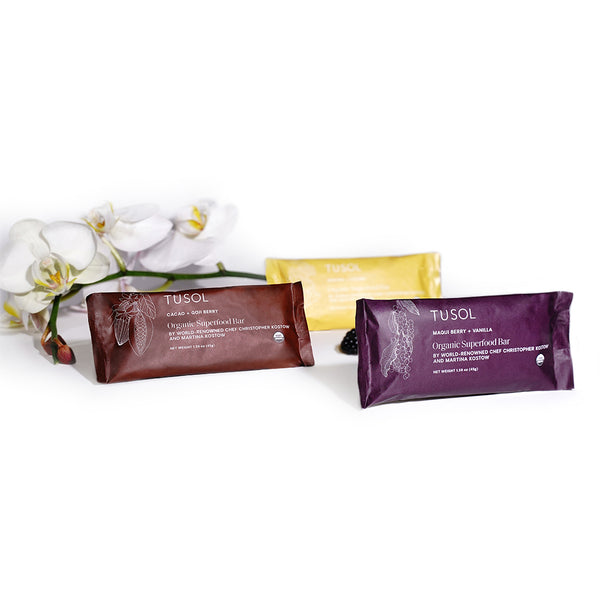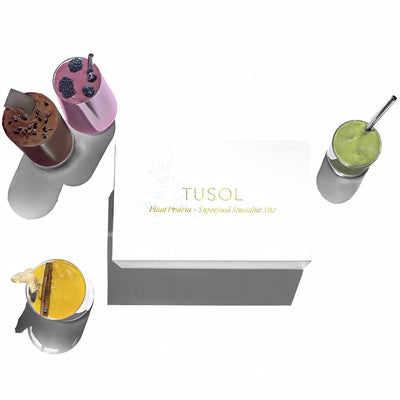Menopause signifies the end of a woman’s menstrual cycle. The term, ‘menopause,’ often refers to the changes and symptoms that take place during this time. Yet, contrary to popular belief many of these symptoms aren’t ‘normal.’ Yes, many women experience them, but it doesn’t necessarily mean they have to happen.
This further doesn’t mean menopause itself isn’t normal. In fact, menopause is a natural part of aging. After the age of 40, the ovaries will eventually stop producing eggs and menstruation will come to a grinding halt. But let’s dive a little deeper. What’s going on during menopause? And what can you do about the common symptoms that may arise?
What happens during menopause?
Menopause is the stopping of menstruation that happens after the age of 40. Usually, many women experience this around 50 years of age. As previously mentioned, this is a completely natural part of aging.
As you age, your reproductive system slows down. As a woman approaches menopause, the ovaries begin to produce less progesterone. And when this happens, it, inevitably, impacts your menstrual cycle. Some women may experience irregularities in their cycle during this time, which is then followed by a complete absence of menstruation.
Technically, menopause is when you haven’t had a period for over a year - without medications or surgery interfering. Typically, this process happens in gradual phases, which are outlined in more detail below.
The 3 phases of menopause
Menopause typically occurs in 3 phases, including:
Perimenopause
Perimenopause happens about a decade before menopause. The ovaries slowly begin producing less and less estrogen. Typically, this stage begins during a woman’s 40s. However, it can also happen during the 30s, depending on the person, their genetics, and their health.
This phase takes place all the way up until your period no longer happens. In the last few years of perimenopause, the ovaries rapidly decrease the amount of estrogen they produce - even more so than before. This is frequently when many women begin experiencing menopausal symptoms, such as:
-
Irregular or missed periods
-
Hot flashes
-
Excessive sweating
-
Vaginal dryness
-
Frequent urination
-
Difficulty sleeping
-
Sore breasts
-
Mood fluctuations
-
Dry skin, mouth, or eyes
Menopause
At this stage in the game, a woman no longer has her period. The ovaries are no longer releasing eggs nor are they producing enough progesterone to balance estrogen. Further symptoms during this stage may include:
-
Fatigue
-
Moodiness
-
Rapid heart rate
-
Headaches or migraines
-
Depression
-
Muscle and joint pain
-
Hair loss
-
Weight gain
-
Low sex drive
Post-menopause
Post-menopause is the period of time after 12 months of no menstruation. Many women begin finding relief from hot flashes and other symptoms. Yet, there are some women that may experience continued symptoms for the decade that follows. With lower progesterone production, women are also prone to osteoporosis and heart disease. Occasionally, hormonal therapy or other medications may be recommended to help with this. Yet, there are also other ways (more on this below).
Estrogen dominance and progesterone deficiency
Contrary to popular belief, there is a highly unrecognized phenomenon, and that is...estrogen dominance.
Estrogen dominance doesn’t necessarily refer to the production of too much estrogen, but rather, an imbalance regarding the estrogen-progesterone ratio.
This means that estrogen is not being properly excreted and often that not enough progesterone is being made by the body to balance out estrogen (more on this in a second).
Another common misconception or overlooked piece regarding female reproductive health? The idea that the ovaries simply run out of eggs and that’s why menopause happens. While during menopause the ovaries no longer release eggs, they don’t necessarily run out suddenly.
So let’s set the record straight on all of this - What is really going on?
Various research and studies indicate that estrogen dominance may lead to early menopause and the general onset of menopause. The estrogen dominance referred to in these research studies happens when the body fails to produce enough progesterone. While estrogen continues to be produced at normal levels, an imbalance happens. Estrogen is in excess since there isn’t enough progesterone to balance it out.
Estrogen dominance typically arises from nutrition deficiencies and stress. And if you’re a woman, you want to be aware of this!
Excess estrogen compared to progesterone can actually kill your brain cells. It can accelerate aging by causing dysfunctions with the thyroid, desensitizing nerves, and more. And yes, it can lead to menopause, particularly early menopause.
Dr. Ray Peat states that:
[su_quote]“the onset of menopause (the first missed period, suddenly increased bone loss, nervous symptoms such as depression, insomnia, and flushing) corresponds to the failure to produce progesterone, while estrogen is produced at normal levels.”[/su_quote]
More specifically, aging that leads to menopause is caused by the exhaustion of the hypothalamic nerve which happens due to excess estrogen and stress. It’s been indicated that aging and menopause could be stalled if this were prevented.
What can you do about menopausal symptoms?
In other words, by ensuring your body is producing enough progesterone, making sure you’re eating the right foods, working on ways to lower your stress, and providing the means for optimal thyroid function, you could potentially extend your reproductive age, as well as reduce symptoms or adverse health effects that may occur in conjunction with menopause.
A lot of this comes down to education, consuming a good diet, and generally looking after yourself in the best way possible. Yet, we also have some tips below!
Menopause relief with superfoods
So, what superfoods can you utilize here? What can help decrease your menopausal symptoms? Let’s take a look!
1. Maca Root
Maca is a peruvian plant that has become all the rage in recent years. Usually consumed in powder form, it is known for its impact on fertility and sexual health.
It’s also super nutritious containing protein, fiber, vitamin C, copper, iron, potassium, vitamin B6, and manganese.
And it may even help relieve menopausal symptoms!
Get this: A scientific review showed that maca helped improve menopausal symptoms including hot flashes and sleep difficulties. A 2005 study even suggested maca be used in place of hormonal replacement therapy with possibly less negative effects or side effects.
Other studies have also indicated maca’s use in helping to improve bone health, which may prevent osteoporosis.
Maca can be found in powder form to put in smoothies or lattes. It is also sold in capsule form for a more convenient option. TUSOL Wellness has 2 serving sizes of maca root in each of their smoothie formulations. Gelatinized maca has been proven to be better assimilated in the body vs raw maca root.
2. Chaga Mushroom
 Chaga Mushroom TUSOL Wellness
Chaga Mushroom TUSOL WellnessThe Chaga mushroom has been studied in-depth. It’s highly recognized as a superfood in many biohacking communities and innovative health circles.
Research shows that the Chaga mushroom may play a role in regulating body temperature. In turn, this may aid in reducing bothersome menopausal hot flashes, which many women experience.
This is another one you can find in online or in-person health stores. Many individuals enjoy it as a tea or in capsule form.
Not sure where to start with chaga? TUSOL Wellness has a full serving size added into their everyday smoothie mixes. Make sure the chaga has been sustainably sourced. It has a delightful black tea kind of taste to it.
3. Sesame Seeds
Sesame seeds are another surprising food that may help combat menopausal symptoms. In one five-week study, 24 post-menopausal women took sesame seed powder each day. Results showed improved hormonal statuses and also improved levels of antioxidants.
Other research has also indicated sesame seeds and their potential use in reducing hot flashes, vaginal dryness, improved hormonal metabolism, and more.
4. Ashwagandha
 Ashwagandha TUSOL Wellness
Ashwagandha TUSOL WellnessAshwagandha is a plant that is greatly recognized for its health benefits. And yet again, research has shown that ashwagandha may be useful in helping with menopausal symptoms.
On top of this, ashwagandha can help boost brain function, combat anxiety and depression symptoms, and much more. It’s one plant you may want to seriously consider adding into your daily or weekly diet routine.
5. Royal Jelly
 Royal Jelly TUSOL Wellness
Royal Jelly TUSOL WellnessRoyal jelly is a substance produced by bees which helps provide nutrition to the queen and larvae. Studies have explored royal jelly and its potential to help women reduce their menopausal symptoms. In fact, such studies have shown that royal jelly may help improve back pain and anxiety related to menopause.
Not sure where to buy this one? Check out Amazon or online health stores. Your local health and wellness store may also stock royal jelly in capsules.
6. Daylight for progesterone stimulation
If an imbalance of estrogen and progesterone greatly contributes to menopause and its symptoms, there has to be an easy way to balance it out - right?
Sunlight is it.
The sun isn’t just essential for regulating your sleep-wake cycle. Scientists suggest that exposure to sunlight can improve progesterone levels in the body. Like any hack, you need to have repeated exposure to sunlight on a regular basis. For instance, many individuals chose to expose themselves to the sun first thing in the morning for at least 15 minutes to receive all the health benefits - minus any adverse effects - that the natural and fresh sunlight has to offer.
7. Infrared Therapy for menopause symptoms
Infrared therapy isn’t exactly new. It’s been around for a few decades. But only recently is the general population beginning to really be able to receive its benefits through new devices and even saunas.
In fact, infrared sauna therapy might be something you want to consider to help relieve your post-menopausal symptoms. Research shows that reproductive and menopausal symptoms improved with regular use.
Today, infrared therapy is more available than ever before. There are public saunas, personal saunas, individuals devices, and more. It’s all about choosing what works for you and your lifestyle.
8. Progesterone Cream

Consider using progesterone cream a few times out of the month. Supplementing with a bio-identical progesterone cream can help ease the symptoms of menopause.
To make matters worse, our modern world is full of chemicals that act like estrogens within the body. These chemicals (called xenoestrogens) can further widen the gap between women’s progesterone and estrogen levels, leading to a myriad of undesirable effects referred to as estrogen dominance. These can include fat gain, fatigue, breast tenderness, water retention, depression, headaches, and much, much more. Get it here from Amazon: Progesto-Life $18.95
9. TUSOL Wellness Superfood Smoothie Mix
 TUSOL Wellness Superfood Smoothie Mix
TUSOL Wellness Superfood Smoothie Mix














